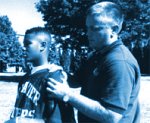

Basic treatment for common injuries is the RICE treatment:

Rest the injured part by staying off it or using support. Apply ice to control swelling. Use a compressive elastic bandage applied snugly but loosely enough so that it does not cause pain. Finally, keep the injured part elevated, it must be above the heart.
Applying supportive bandaging or splinting reduces stress, prevents painful movements and helps control the swelling which is produced when tissues are damaged. Also, keep in mind that heat should only be applied, if at all, in the recovery phases or rehabilitation. Any cream applied must be laid gently on the skin and allowed to soak in. Rubbing increases bleeding and stimulates blood clotting and bone formation in torn muscle fibers. Alcohol must also be avoided since it increases the bleeding and swelling around soft tissue injuries and delays healing.
TREATMENTS FOR:
1. Foot and Ankle Injuries
Most injuries are initially treated with the RICE treatment. Moderate and severe pains and strains are often immobilized with a cast or splint. Severe fractures often require surgical repair.
2. Heat Injuries
If you believe someone is suffering from overexposure to heat, immediately seek medical care. Until help arrives, you should move the victim to a shaded area; remove any excess clothing; wet and fan the body; and elevate the legs and buttocks.
3. Knee Injuries
There are a variety of methods used by orthopedic surgeons to treat knee injuries in athletes. The most important advice is to seek treatment as soon as possible. A common method used by orthopedic surgeons to treat mild knee injuries is the RICE treatment.
4. Shoulder injuries
Early detection is the key to preventing serious shoulder injuries. Many times, orthopedic surgeons will prescribe a series of exercises aimed at strengthening shoulder muscles. Anti-inflammatory medication also may be prescribed to reduce pain and swelling.
5. Sprains and Strains
RICE treatment usually will help minimize the damage. It is important in all but mild cases for a medical doctor to evaluate the injury and establish a treatment and rehabilitation plan. A severe sprain or strain may require surgery or immobilization followed by months of therapy. Mild sprains and strains may require rehabilitation exercises and activity modification during recovery.
6. Stress Fractures
Use the RICE treatment for this injury. Individuals need to rest from the activity that caused the stress fracture, and engage in a pain-free activity during the six to eight weeks it takes most stress fractures to heal.
If the activity that caused the stress fracture is resumed too quickly, larger, harder-to-heal stress fractures can develop. Re-injury also could lead to chronic problems where the stress fracture might never heal properly.